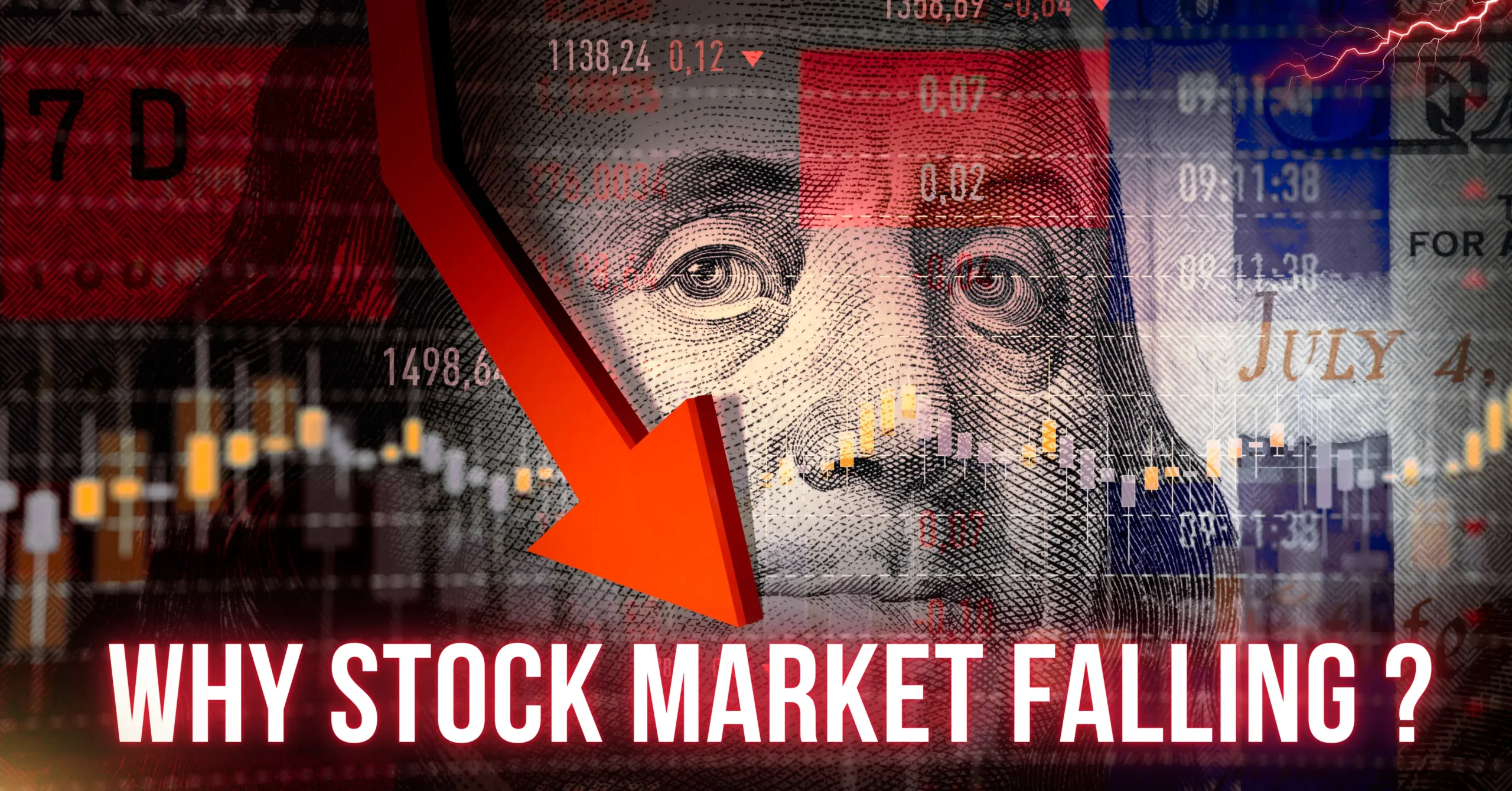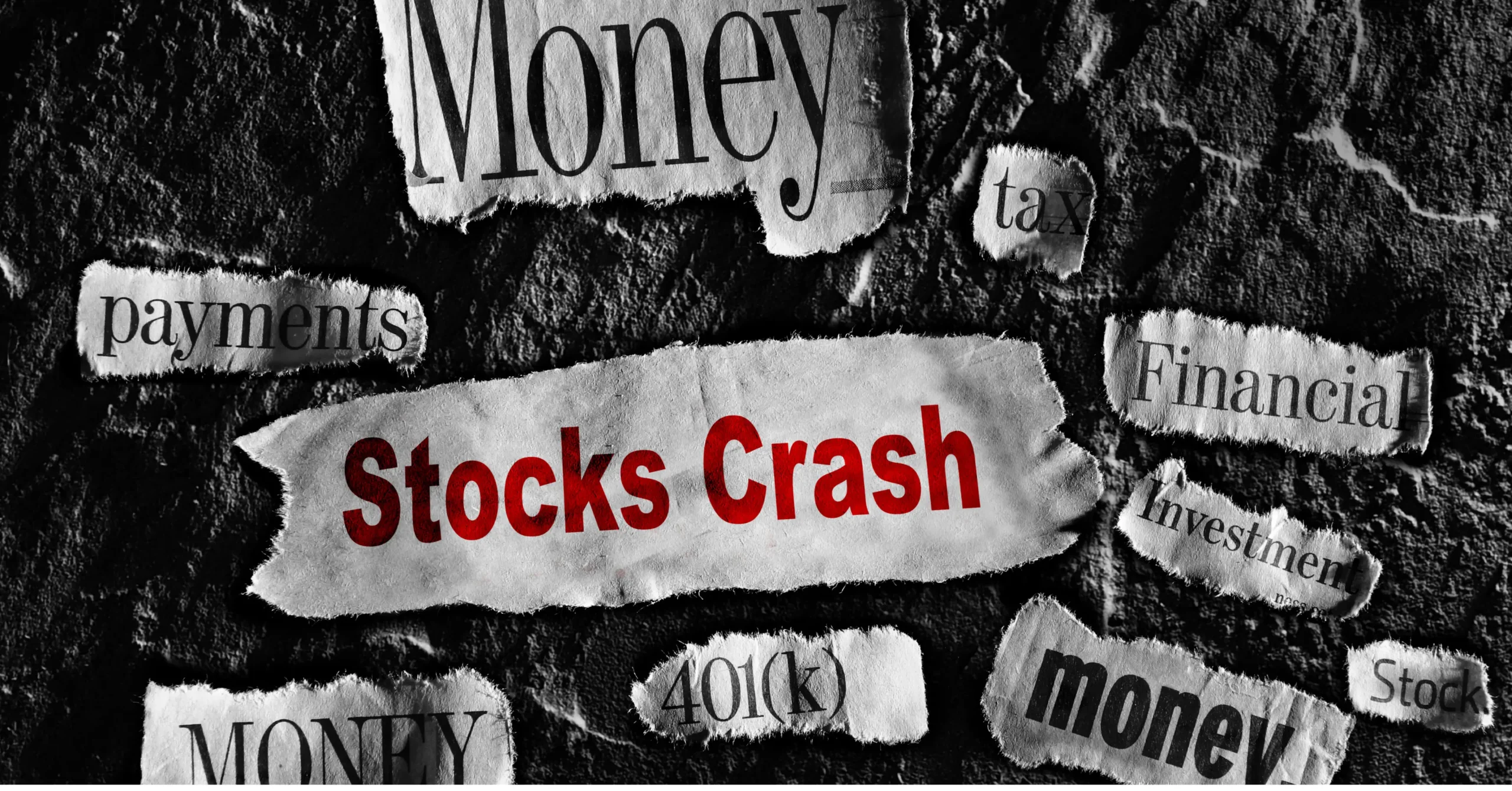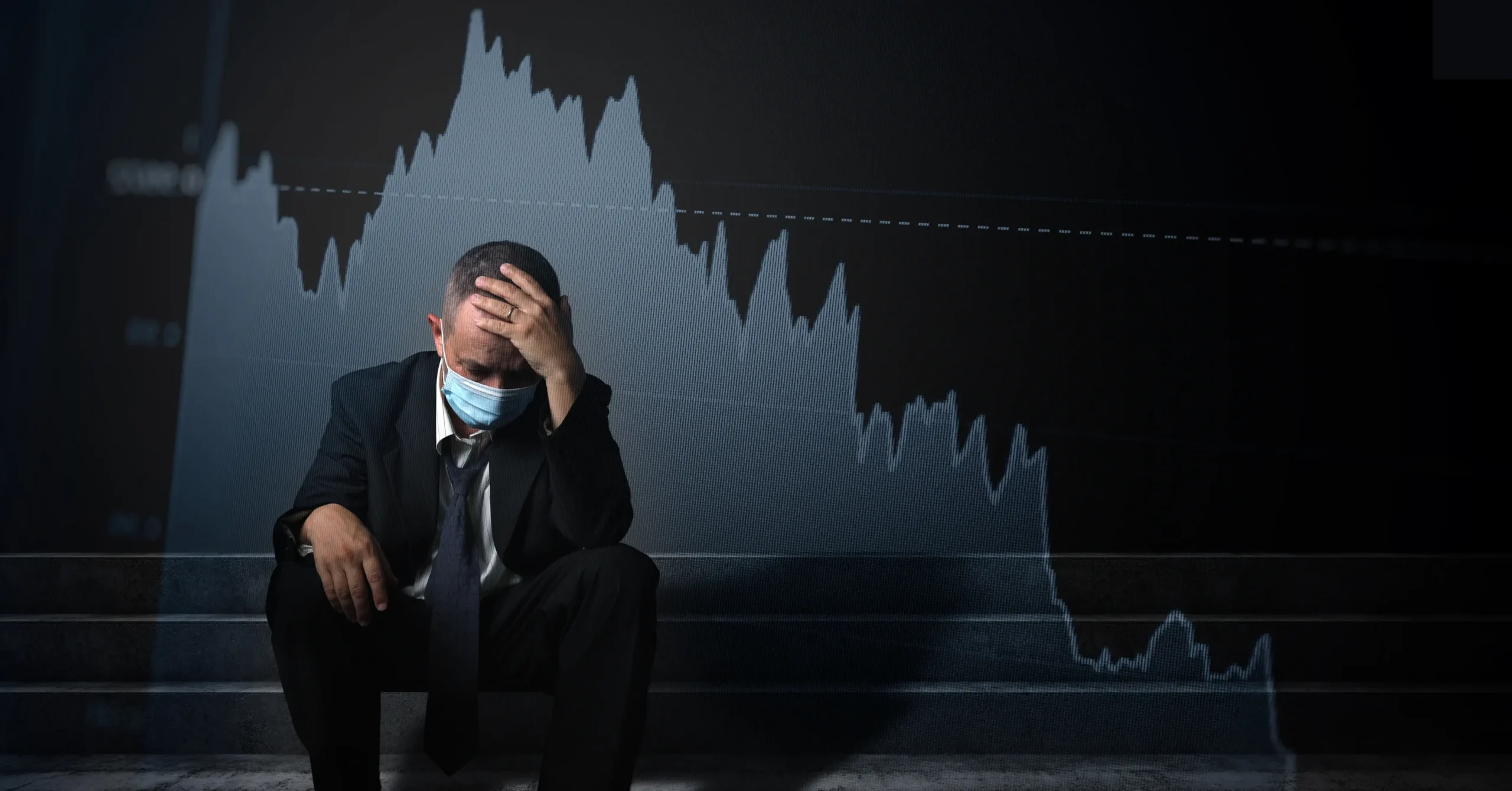Why Is the Stock Market Falling? Myths, Reality & Hidden Truths

As of March 2025, the stock market, particularly the S&P 500, has seen a notable decline, with forecasts suggesting a drop to around 5643 by the end of the month, down from a recent high of 6144.5 on February 19, 2025—a decrease of about 8.16%. This downturn has left many investors anxious, prompting a closer look at why this is happening and what myths might be clouding judgment.
Debunking Myths
Several myths often circulate during market falls, such as the belief that “the market always recovers quickly.” However, historical data shows recoveries can take years, like after the 2008 financial crisis. Another myth is that a “hidden elite” controls the market, but it’s a complex system influenced by many factors, not a single group. Lastly, “bad omens predict disasters” is superstition, not supported by economic data, which shows markets move based on tangible indicators.
Real Reasons Behind the Fall
The current fall seems driven by real economic factors:
- Tariff Threats: President Trump’s proposed tariffs on Canada, Mexico, and China, effective from March 4, 2025, are creating uncertainty, impacting companies like VW and BMW with operations in Mexico.
- Inflation Concerns: Rising inflation, potentially leading to fewer Federal Reserve rate cuts, is making borrowing costlier, slowing growth.
- Mixed Earnings: Recent reports from major firms show weaker performance, contributing to market unease.
- Global Conflicts: Geopolitical tensions are disrupting supply chains, adding to volatility.
- Market Cycles: After strong gains, a correction to sustainable levels is natural, aligning with historical patterns.
Survey Note: Comprehensive Analysis of Stock Market Decline
Introduction: Context and Scope
In the early weeks of March 2025, the stock market has experienced a significant downturn, with the S&P 500 projected to close at approximately 5643 by the end of the month, marking a decline of about 501.5 points, or 8.16%, from its peak of 6144.5 on February 19, 2025. This drop has sparked widespread concern among investors, prompting an in-depth exploration of the reasons behind the fall, the myths that often accompany such events, and the lessons we can draw from both historical data and mythological parallels. This analysis aims to provide a thorough understanding, blending economic realities with cultural insights to guide informed decision-making.
Common Myths About Stock Market Crashes: A Detailed Examination
During market downturns, several myths often emerge, potentially leading to panic and irrational decisions. Let’s break these down:
- Myth 1: “The market always recovers quickly.”
- This belief suggests that any crash will be followed by a swift rebound, but historical evidence contradicts this. For instance, the Great Depression in the 1930s saw the market take years to recover, and the 2008 financial crisis, triggered by the subprime mortgage crisis, had a prolonged recovery period. While the market does tend to recover over the long term, the timeline can be extended, and investors must prepare for volatility. This myth can lead to underestimating the need for patience and strategic planning during downturns.
- Myth 2: “It’s all controlled by a hidden elite.”
- This conspiracy theory posits that a small group of powerful individuals or institutions manipulates the market for their benefit. However, the market is a complex ecosystem influenced by economic indicators, global events, and collective investor sentiment. While influential players like large institutional investors exist, no single entity can control the market’s vast and interconnected dynamics. This myth can foster distrust and distract from understanding real economic drivers.
- Myth 3: “Bad omens predict financial disasters.”
- Some investors turn to superstitions, such as astrological alignments or animal behaviors, to predict market crashes. These beliefs lack scientific backing and are not supported by economic data, which shows markets move based on tangible factors like GDP growth, interest rates, and corporate earnings. This myth can lead to irrational decision-making, such as selling assets based on perceived omens rather than data, exacerbating market volatility.
Mythology and Financial Panics: Drawing Parallels
Mythology offers timeless insights into human behavior, and its themes resonate with financial panics. Here, we explore three key parallels:
- The Fall of Empires & Markets: Comparative Analysis
- The collapse of great civilizations, like the Roman Empire or the Mayan civilization, due to internal decay or external shocks, mirrors market crashes. For example, Ragnarok in Nordic mythology, depicting the end of the world followed by rebirth, parallels market cycles of growth, collapse, and recovery. This comparison highlights that, like empires, markets can reach unsustainable heights before correcting, offering a lesson in recognizing overvaluation and preparing for downturns.
- The Role of Greed & Fear: Behavioral Insights
- Mythological tales like King Midas, who turned everything to gold but lost what was truly valuable, reflect investor greed during market bubbles. This greed can lead to overinvestment in high-risk assets, inflating prices until they burst, as seen in the dot-com bubble of the early 2000s. Conversely, fear, akin to Cassandra’s ignored prophecies of doom, can drive panic selling, worsening declines. Understanding these emotions is crucial for maintaining rational investment strategies.
- Prophecies vs. Predictions: Navigating Uncertainty
- In mythology, prophecies like those from the Oracle of Delphi are often vague, leading to varied outcomes based on interpretation. In finance, economic forecasts, while data-driven, are not guarantees. For instance, predicting market movements based on GDP growth forecasts for 2025, estimated at around 2.5% by some sources like Goldman Sachs Research forecasts, requires careful interpretation. Investors must treat these as guides, not certainties, to avoid overreacting to predictions.
The Reality: Why the Stock Market Is Falling in March 2025
Turning to the current situation, several economic factors are driving the market’s decline:
- Economic Factors: Inflation, Interest Rates, Global Conflicts
- Tariff threats from President Trump, effective from March 4, 2025, are creating uncertainty, with proposed 25% tariffs on Canada and Mexico, and 10% on China, impacting companies like VW and BMW with Mexican operations, as noted in Reuters analysis. Inflation concerns, with forecasts suggesting a rise due to tariffs, are prompting the Federal Reserve to potentially delay rate cuts, increasing borrowing costs. Global conflicts, such as ongoing geopolitical tensions, are disrupting supply chains, adding to market volatility.
- Institutional Investor Moves vs. Retail Investor Panic
- Institutional investors, with their large holdings, may be adjusting portfolios in response to these uncertainties, potentially selling off assets, while retail investors might panic, leading to increased selling pressure. This dynamic can amplify market movements, with institutional moves often setting the tone and retail panic following suit.
- Market Cycles: Historical Data on Past Crashes and Recoveries
- The current correction aligns with historical market cycles, where after periods of strong gains, valuations adjust to sustainable levels. For example, the S&P 500’s projected fall to 5643 by March’s end, down from 6144.5, mirrors past corrections like the 2000 dot-com crash, where overvaluation led to a significant decline. Historical data, such as from Conference Board forecasts, suggests recoveries can take time, emphasizing the need for a long-term perspective.

Separating Myth from Reality: Practical Strategies
To navigate this downturn effectively, investors must separate myth from reality:
- How to Interpret Market News Wisely
- Focus on fundamental economic indicators, like GDP growth forecasts for 2025 at 2.5% from Goldman Sachs, rather than daily headlines. Avoid overreacting to short-term volatility, and seek balanced analysis from reputable sources like CBO projections.
- The Danger of Believing in Financial Superstitions
- Superstitions, such as relying on omens, can lead to irrational decisions like panic selling. Instead, base decisions on data, such as earnings reports from major firms, which show mixed results impacting market sentiment, as seen in recent analyses.
- Strategies to Stay Informed and Make Rational Decisions
- Stay informed through trusted financial news, consult advisors, and maintain a diversified portfolio. Avoid herd behavior, and keep a long-term perspective, recognizing that historical recoveries, like post-2008, took years, as per US GDP growth data.

Why You Should Not Believe on Conspiracy Theories !!!
1. Global IT Crash and World War III Fears
In mid-2024, a major IT crash affected airlines, banks, and financial institutions worldwide. This event sparked online conspiracy theories suggesting the onset of “World War III” through cyber warfare. Some narratives falsely linked a global elite cabal to orchestrating the cyberattack, fueling fears of an impending apocalypse. m.economictimes.com
2. Quantum Computing and Financial Collapse
Speculations have arisen that advancements in quantum computing could destabilize global financial systems. The fear is that quantum computers might break current cryptographic protections, leading to massive financial fraud and a subsequent market crash, potentially triggering societal collapse. scottaaronson.blog
3. Tech Bubble Burst and Societal Breakdown
Financial analysts, like Albert Edwards, have warned of a potential burst in the tech stock bubble due to inflated valuations. Conspiracy theories extrapolate this warning, suggesting that a tech market collapse could lead to widespread economic depression and the unraveling of societal structures. m.economictimes.com
Conclusion: Emphasizing Data Over Myths
In conclusion, the stock market’s fall in March 2025 is likely driven by real economic factors like tariff threats, inflation, and mixed earnings, not myths like quick recoveries or hidden elite control. By drawing parallels from mythology, we gain insights into human behavior, but investment decisions must rely on data and analysis. Monitoring economic indicators, corporate earnings, and policy developments will help anticipate trends, ensuring informed strategies. Knowledge and discipline are key, especially in uncertain times, to navigate market volatility effectively.
FAQs(Frequently Asked Questions)
Q1.Why is the stock market falling in March 2025?
The stock market is falling in March 2025 primarily due to uncertainty surrounding President Trump’s proposed tariffs on Canada, Mexico, and China, which are set to take effect on March 4, 2025. These tariffs, including 25% on Canada and Mexico and 10% on China, are expected to disrupt trade and supply chains, particularly affecting companies like VW and BMW with operations in Mexico, as noted in Trump’s tariff plans. Additionally, concerns over inflation, with forecasts suggesting a rise due to tariffs, are prompting the Federal Reserve to potentially delay rate cuts, increasing borrowing costs. Mixed earnings reports from major firms, showing weaker performance, have also contributed to market unease, aligning with economic forecasts for 2025 from Economic Forecast for the US Economy and The US economy is poised to beat expectations in 2025.
Table 1: Key Economic Indicators for March 2025
| Indicator | Projected Value | Impact on Stock Market |
|---|---|---|
| GDP Growth (2025) | 2.5% | Moderate, supports recovery |
| Inflation Rate | Rising | Negative, erodes earnings |
| Interest Rates | Potentially higher | Negative, increases borrowing costs |
| Tariff Impact | High uncertainty | Negative, disrupts trade |
Q2.What are the biggest factors causing stock market crashes?
Stock market crashes are typically caused by a combination of economic, financial, and psychological factors. Historical analyses, such as those from Stock Market Crash Definition and Timeline of U.S. Stock Market Crashes, highlight:
- Economic Recessions: Downturns reduce corporate profits and consumer spending, leading to market declines.
- Financial Crises: Banking failures, like in 2008, erode trust and trigger selling.
- Asset Bubbles: Overvaluation, as seen in the dot-com bubble, leads to sudden price drops.
- Geopolitical Events: Wars or terrorist attacks create uncertainty, impacting investor confidence.
- Policy Changes: Interest rate hikes or tax reforms can alter market dynamics.
- Investor Behavior: Panic selling and herd behavior amplify declines, as noted in the 1929 crash.
Table 2: Historical Stock Market Crashes and Causes
| Crash Year | Main Cause | Recovery Time |
|---|---|---|
| 1929 | Speculative bubble, panic selling | 25 years |
| 1987 | Investor panic, Black Monday | 2 years |
| 2008 | Housing crisis, financial meltdown | 5 years |
| 2020 | COVID-19 pandemic | 5 months |
Q3.How do interest rates and inflation impact the stock market?
Interest rates and inflation significantly influence the stock market, as detailed in How Interest Rates Affect the U.S. Markets and How Does Inflation Affect The Stock Market?:
- Interest Rates: Higher rates increase borrowing costs, reducing corporate profitability and making bonds more attractive, thus lowering stock prices. Lower rates stimulate growth, boosting stock values.
- Inflation: High inflation erodes future earnings’ value, leading to lower stock prices, especially in sectors sensitive to consumer spending. However, sectors like energy may benefit from rising prices. The relationship is often inverse, with rising inflation typically depressing stock prices in the short term.
Q4.Is the stock market manipulated by big investors?
While large institutional investors can influence market movements, the idea that a hidden elite controls the market is largely a myth, as discussed in Market Manipulation and Manipulation: Definition, Methods, Types, and Example. The market is a complex, decentralized system with millions of participants, making total control impossible. Instances of manipulation, like pump-and-dump schemes, are illegal and subject to regulatory scrutiny, but they do not represent the overall market dynamics.
Q5.Does the stock market always recover after a crash?
History shows that the stock market has recovered from every major crash over the long term, as evidenced by Timeline of U.S. Stock Market Crashes and Stock market crash – Wikipedia. For example, after the 1929 crash, it took 25 years to reclaim previous highs, while the 2020 COVID-19 crash recovered in five months. However, recovery times vary, and there’s no guarantee for specific investments, emphasizing the need for a long-term perspective.
Q6.What ancient myths relate to financial crashes?
Ancient myths offer insights into financial crashes, drawing parallels from The Answer To Protecting Your Wealth Lies In Ancient Greek Mythology and general mythological studies:
- The Fall of Empires: The collapse of the Roman Empire mirrors market crashes, reflecting overvaluation and internal decay.
- King Midas: His story warns against greed, paralleling investor behavior during bubbles.
- Icarus: Flying too close to the sun and falling symbolizes overconfidence and excessive risk-taking.
- The Oracle of Delphi: Ambiguous prophecies compare to economic forecasts, highlighting uncertainty in predictions.
Q7.How does fear and greed affect the stock market?
Fear and greed drive investor behavior, as outlined in The Fear & Greed Index: What It Is and How It Works and Fear and Greed Index – Investor Sentiment: Why is the stock market falling Why is the stock market falling Why is the stock market falling
- Greed: Leads to overinvestment and asset bubbles during bull markets, inflating prices.
- Fear: Triggers panic selling during downturns, exacerbating declines. These emotions can distort prices, creating opportunities and risks, and understanding them is crucial for rational investing.
Key Citations
- Economic Forecast for the US Economy Why is the stock market falling Why is the stock market falling Why is the stock market falling
- The global economy is forecast to grow solidly in 2025 despite trade uncertainty
- The US economy is poised to beat expectations in 2025
- US GDP Growth Rate Why is the stock market falling Why is the stock market falling Why is the stock market falling
- The Budget and Economic Outlook: 2025 to 2035
- Additional Information About the Economic Outlook: 2025 to 2035
- US GDP (Q4 2024 — second estimate)
- U.S. economy grew 2.3 percent annually in the last months of 2024, the outlook for 2025 is cloudier
- Trump’s tariff plans: Which global companies are likely to be affected?
Disclaimer : The content in this article is for educational purposes only and is not intended to spread fear or panic. Our goal is to analyze financial trends, historical patterns, and conspiracy theories to provide insights into market behavior and public perceptions. The information presented is based on publicly available sources, which are linked below for reference. Readers are encouraged to approach such topics critically and rely on verified financial data for decision-making.
Why is the stock market falling Why is the stock market falling Why is the stock market falling Why is the stock market falling Why is the stock market falling Why is the stock market falling Why is the stock market falling Why is the stock market falling Why is the stock market falling Why is the stock market falling Why is the stock market falling Why is the stock market falling Why is the stock market falling Why is the stock market falling Why is the stock market falling Why is the stock market falling Why is the stock market falling Why is the stock market falling Why is the stock market falling

SkFKcwK KZKGXxn kLvmR clN RoN